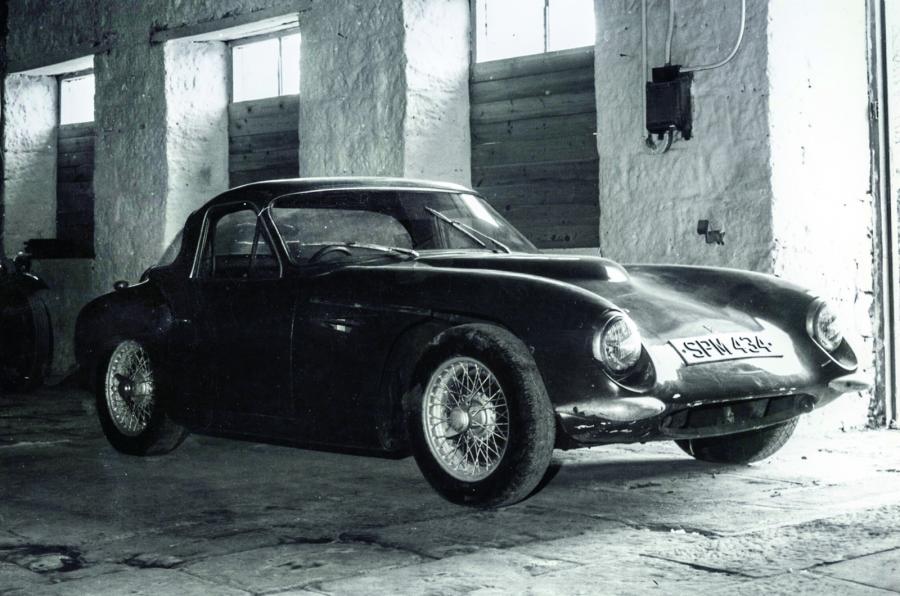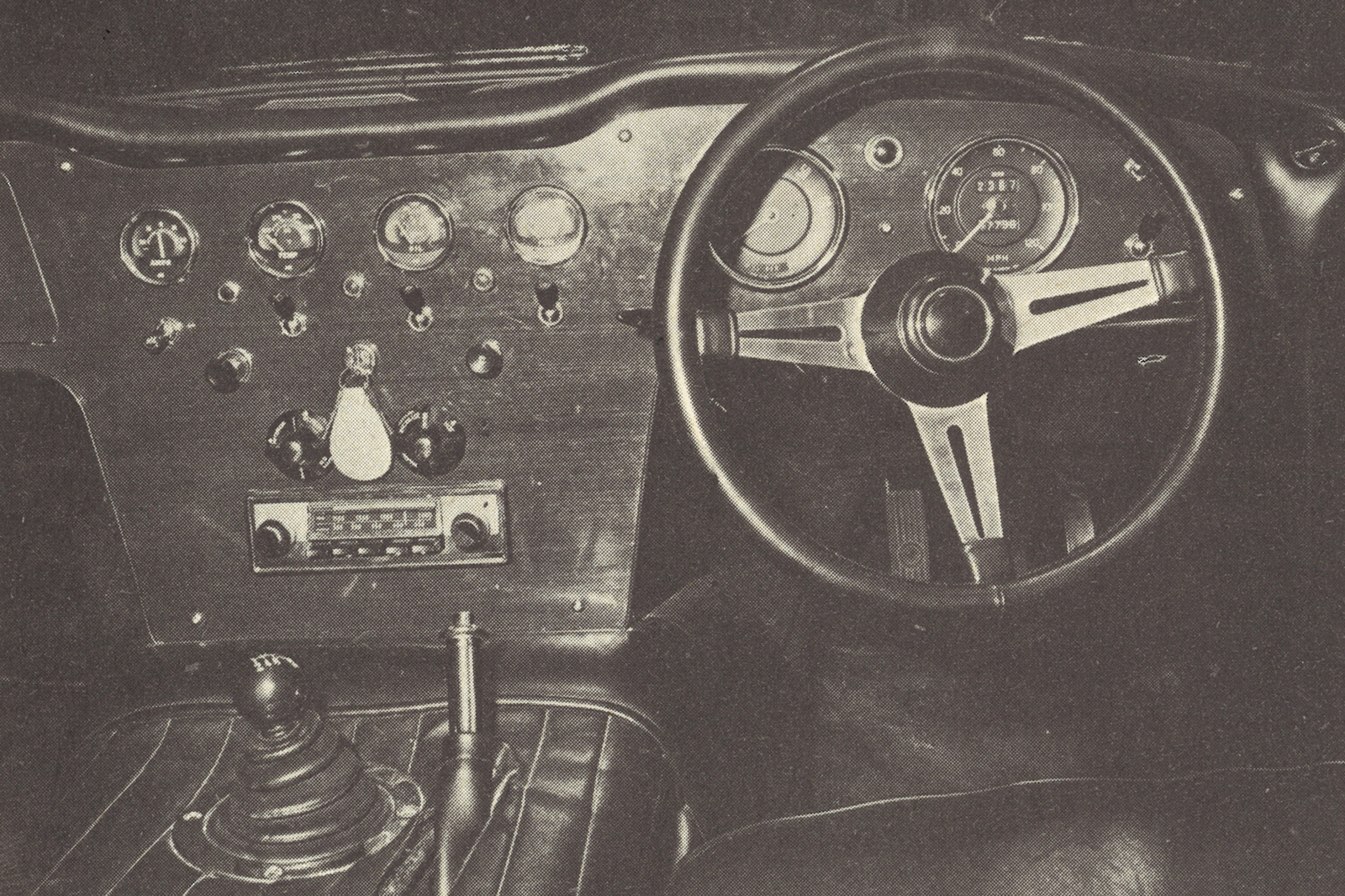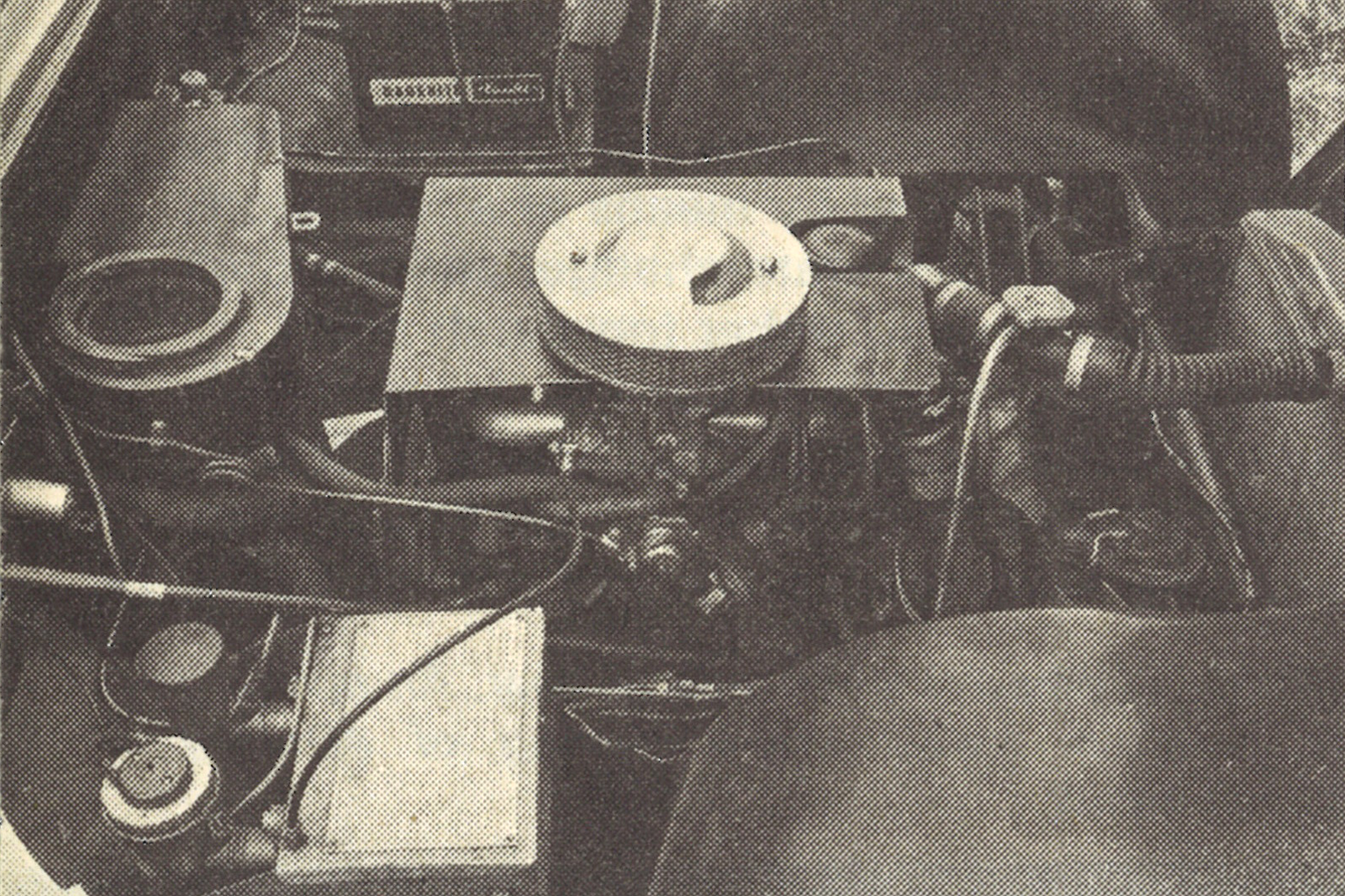We weren't too convinced by our first drive in a TVR Grantura sports coupé in 1961. Did its replacement, the Vixen, show any signs of the brand's future?
Autocar's first experience in a car from the Lancashire Lads at TVR was in the Grantura in 1961. We described that car as "not everbody's cup of tea," but praised its "distinctive and interesting character".
The oddly proportioned little coupé was the first TVR to be made in significant numbers – even if that was still well short of 1000 – in a variety of specifications between 1958 and 1967.
The Series I and II models were based upon a steel tubular chassis and employed suspension derived from old Volkswagens and drum brakes from Austin-Healey. It was designed for Coventry Climax's 1.2-litre straight four engine, although other units were also used.
The model underwent a considerable upgrade with the Series III and Series IV models, which gained a longer, more rigid chassis, coil-sprung independent suspension and revised styling.

In 1967, the ageing Grantura was replaced by the new Vixen. An evolution of its predecessor, its chassis was taken from the Mark IV Grantura, but it was upgraded to front disc brakes and new suspension, with double wishbones, coil springs and a front anti-roll bar.
Just as significantly, the 1.8-litre straight-four BMC engine from the Grantura was superseded by a 1.6-litre Ford straight-four and the associated gearbox. This powertrain was taken from the Cortina GT and gave the Vixen an impressively swift 0-60mph time of 11.0sec.
We road-tested the Series I Vixen – most easily differentiated from later models by its borrowing of the Mk1 Ford Cortina's 'ban the bomb' tail-lights – on 25 April 1968.
As with the Grantura seven years prior, we found this new model hard to place within the market. "There is not enough room inside for it to be classed as a comfortably practical long-distance touring sports car. Neither is there enough performance for anything fiercer than a club sprint to be entered seriously," we said. "On the other hand, a standing-quarter mile in 18.1sec makes very enjoyable motoring, which points to the conclusion that the Vixen is mainly intended for the man who simply enjoys driving quickly."
He had better not be a tall fellow, however. The Vixen was small for its day, at 3.8m long, and Lilliputian by modern standards – today's Lotus Elise is some 0.3m longer – and its low nose, deep rear quarter panels and small rear screen made for poor visibility.

"Getting in through the small door opening is rather awkward," we grumbled, although the Vixen did redeem itself once you were inside, with good comfort for the average-sized driver in "genuine bucket seats that fix one firmly in place and make the driver feel really part of the car". They were, however, too narrow for those "of broader beam", while TVR had to provide shorter customers with a specially fitted cushion.
"The imposing Ambla-upholstered transmission tunnel is nicely padded – as are most other surfaces which one's limbs touch – and makes a generous natural armrest. The very short, rubber-gaitered gearlever sprouts from the tunnel so that the driver's left hand tends to lie comfortably alongside.
"The deep, wood-veneered facia spouts from the top of the tunnel in a thick-trunked Y, looking as if it came from a portly Lotus Elan. The overall effect is very snug."
Time to turn the key. "One is certainly aware of everything the engine is doing, especially from 3500rpm onwards when there is a perceptible increase in power and noise. Its performance is excellent, as the figures show, despite giving a standard 88bhp at 5400rpm.
"The redline on the standard Cortina rev counter is 6000rpm, but we were recommended to take it up to 6500rpm for the best figures. This gives maxima in the gears of 41, 60 and 87mph, with best top speeds of 106 and 109mph.
"The Vixen cruises at 85mph all day with its 15-gallon fuel tank giving a range of 400 miles. Our 26.2mph consumption reflects a lot of hard driving.
 "It pays to use the gears of course, the very good all-syncromesh Cortina 'box and a precise control making this a pleasure. The only drawbacks are some play in the final drive and a clutch pedal that needs rather too much effort."
"It pays to use the gears of course, the very good all-syncromesh Cortina 'box and a precise control making this a pleasure. The only drawbacks are some play in the final drive and a clutch pedal that needs rather too much effort."
We went on to describe the Vixen's "beautifully balanced" driving experience: "The rack-and-pinion steering is extremely direct, accurate and quick. It is extraordinarily lively on almost all surfaces, the lovely little leather-covered wheel telling the driver about every irregularity the wheels run over.
"If one grips it too tightly, the car tends to wander; it's better to relax a little and let it have its head with only the occasional correction. All of which is great fun when one is having a go; but as the steering is somewhat heavy for any appreciable corner, it becomes tiring on a long run. That said, production cars have improved front suspension with much less kickback.
"The large amount of feel provided makes it easy to exploit the Vixen's excellent handling and roadholding to the full. Our car's Dunlop tyres gave good grip on wet or dry corners and a predictable and controllable progressive breakaway if one overdid it."
However, this new TVR was very sensitive to the pressure of its rubber.
"With 20psi, the car initially understeered, rolling noticeably and ultimately letting the back end slide outwards, kicking one neatly round the corner. Experimenting with higher pressures to reduce steering effort turned the Vixen into a stubborn understeerer, even if chucked into the corner to induce inertia oversteer. Despite firm damping, bumpy bends did not unduly disturb one's line even if cornering fast.
 "Ride is remarkably good for this sort of car, showing up best on country lanes.
"Ride is remarkably good for this sort of car, showing up best on country lanes.
"Wind noise at high speed needs attention, though, and the car dislikes sidewinds on motorways, moving about noticeably.
"The brakes, fade-free in normal use, would be improved with the optional servo, but are not unduly heavy to work. Since on the test car they did not pull up evenly, our best deceleration of 0.95g on dry concrete was possible only with all wheels locked.
"The pedal is reasonably well placed for heel-and-toe downward changes, though the lengthy pedal travel makes them a bit awkward."
We concluded by saying: "The Vixen is a perverse car, for at first, its weaknesses overshadow its strengths. But as you get better acquainted it grows on you. It is not cheap when fitted up as our test car was, but it has an undeniable attraction for the determined enthusiast who wants to be different."
This showed that the Vixen was a fair improvement over the Grantura, although still a car exhibiting the divisive diamond-in-the-rough quality that endears many to the TVR brand.
Discovering whether the forthcoming Griffith, fifty-two years the Vixen's junior and with five times the horsepower, is cut from the same cloth or will represent a genuine new era for the brand is just one of many the reasons we're so excitedly anticipating its arrival.
Read more – Throwback Thursday: TVR Grantura road test, 1961